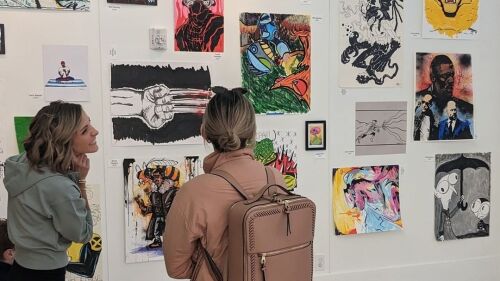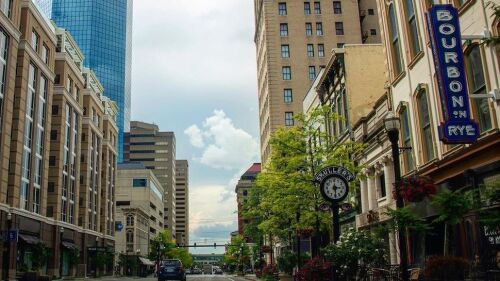Over the years, our beautiful southern city has grown into a cultural icon for our state. It’s easy to assume that bourbon, horses + basketball brought us here — but there’s more to the story.
The African-American Heritage Guide in downtown Lexington was established to do just that — to tell the whole story.
There are 11 signs in downtown that tell the stories of the people + places that helped with the advancement of equality in Lexington. They include historical photos + stories about our city’s past.
We hope you take the time to visit each of these 11 historical markers as you continue to explore downtown.
No. 1, 400 W. Main St.
Robert Charles O’Hara was a lawyer who vocally expressed his disdain for racial violence + voter intimidation.
No. 2, 275 S. Limestone St.
Lexington’s South Hill neighborhood was never residentially segregated — a rarity in the south. This community grew in large numbers because Lexington’s free Black community worked diligently to free their enslaved family members.
No. 3, 250 W. Main St.
In 1959, Lexingtonians staged sit-ins at working-class lunch counters to protest businesses that practiced discrimination.
No. 4, 100 E. Main St.
In 1961, Black women staged their own peaceful sit-ins at Lexington’s Phoenix Hotel — now Parka Plaza Square — in hopes that the hotel would eventually acknowledge their patronage. The hotel changed its policy + eventually served the protesters.
No. 5, 150 N. Limestone St.
This sign is dedicated to “The Jacksons” — two prominent leaders in Lexington’s African-American community.
No. 6, 266 E. Short St.
The first Black church west of the Allegheny Mountains was Lexington’s First African Baptist Church. In the mid-1800s, this church held Kentucky’s largest congregation — ~2,000 worshippers.
No. 7, 102 W. Short St.
Lexington has always been a major metropolitan trading hub in the Bluegrass. The sale and purchase of human beings were no exception to this.
No. 8, 154 Church St.
This sign is located on the former site of the Howard School — the first free school for African-Americans in Lexington.
No. 9, 175 N. Mill St.
Charlotte Dupuy and her family were enslaved by Henry Clay. Charlotte petitioned the US Circuit Court to sue the clays for her freedom. She was eventually granted her freedom 11 years later.
No. 10, 535 W. Second St.
Born in Lexington, Alfred Russel worked to free himself from slavery. After he obtained his freedom, he sailed to Africa + was elected Vice President of Liberia in 1881, eventually serving as President from 1883-1884.
No. 11, 545 N. Limestone St.
Marry Ellen Britton was the first licensed woman to practice medicine in Lexington. This sign sits at the site of her home where she practiced.











